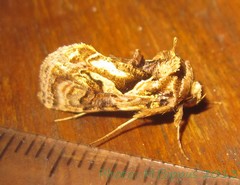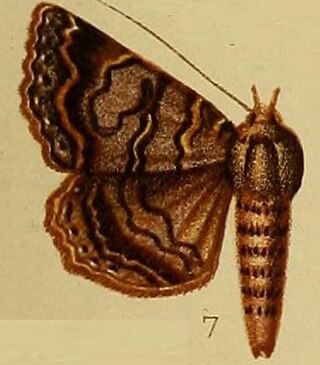
Alice Ernestine Prin, nicknamed the Queen of Montparnasse and often known as Kiki de Montparnasse, was a French model, chanteuse, memoirist and painter during the Jazz Age. She flourished in, and helped define, the liberated culture of Paris in the so-called Années folles. She became one of the most famous models of the 20th century and in the history of avant-garde art.

Prince of Orange is a title associated with the sovereign Principality of Orange, in what is now southern France and subsequently held by the stadtholders of, and then the heirs apparent of, the Netherlands.

The Winkler Prins is a Dutch-language encyclopedia, founded by the Dutch poet and clergyman Anthony Winkler Prins (1817–1908) and published by Elsevier. It has run through nine printed editions; the first, issued in 16 volumes from 1870 to 1882, and the last, numbering 26 volumes, from 1990 to 1993. Winkler Prins has been the most distinguished printed encyclopedia in the Dutch language. Publisher Elsevier collaborated with the Microsoft Corporation to put the 1993 version plus any new additions onto CD-ROM in 1997 as the Dutch-language version of Encarta.

Gracillariidae is an important family of insects in the order Lepidoptera and the principal family of leaf miners that includes several economic, horticultural or recently invasive pest species such as the horse-chestnut leaf miner, Cameraria ohridella.

Cimeliidae, the gold moths, is a family of moths that is now placed in the macroheteroceran superfamily Drepanoidea, although previously placed in its own superfamily. Uniquely, they have a pair of pocket-like organs on the seventh abdominal spiracle of the adult moth which are only possibly sound receptive organs. They are quite large and brightly coloured moths that occur in southern Europe and feed on species of Euphorbia. Sometimes they are attracted to light. The family was first described by Pierre Chrétien in 1916.

The Obtectomera is a clade of macro-moths and butterflies, comprising over 100,000 species in at least 12 superfamilies.

Lophotavia is a genus of moths of the family Erebidae. The genus was erected by George Hampson in 1926.

Urodeta is a genus of moths of the family Elachistidae. The genus was originally assigned to the family Momphidae.

Pardoxia graellsii, the yellow drab, is a moth species in the family Nolidae first described by Joachim François Philibert Feisthamel in 1837. It is found in France, Spain, Turkey, Iraq, China, India, Myanmar, Cape Verde, the Comoros, Ethiopia, Ghana, Réunion, Madagascar, Malawi, Mauritania, Mauritius, Nigeria, Saudi Arabia, Sierra Leone, South Africa, the Gambia, Yemen and Zimbabwe.

Jacobus Deketh was a captain in the Frisian Admiralty, one of the five admiralties of the Dutch Republic. In 1744 at the age of 18, Deketh joined the Admiralty of Amsterdam. He became a lieutenant and later extraordinary captain and sailed to the Dutch East Indies. In 1758, Deketh continued his career in the Frisian Admiralty. He became captain of a ship, Edam. He was appointed full captain of the Frisian Admiralty in 1760.

Ctenoplusia dorfmeisteri is a moth of the family Noctuidae. It is found in western, central and southern Africa, where it's known from Congo, Nigeria, Gabon, Ghana, South Africa, Mauritius, Réunion and from Yemen.

Callopistria latreillei, Latreille's Latin, is a moth of the family Noctuidae. The species can be found in the Palearctic realm, most parts of Europe, Asia, and in Africa from Egypt to South Africa. The habitat consists of rocky limestone slopes with deciduous woodland.

Lophotavia pulcherrima is a moth of the family Erebidae first described by William Jacob Holland in 1894.

De Prins van Oranje is a tower mill in Bredevoort, Gelderland, Netherlands which was built in 1870 and has been restored to working order. The mill is listed as a Rijksmonument.

Teunismolen or De Haan is a smock mill in De Heurne, Gelderland, Netherlands which was built in 1822 and has been restored to working order. The mill is listed as a Rijksmonument.
Lycée Français Prins Henrik is a French international school in central Copenhagen, Denmark. Located in Frederiksberg Allé in the municipality of Frederiksberg, it serves levels primaire through lycée.
The Macroheterocera are a well supported clade of moths that are closely related to butterflies and macro-moths.













